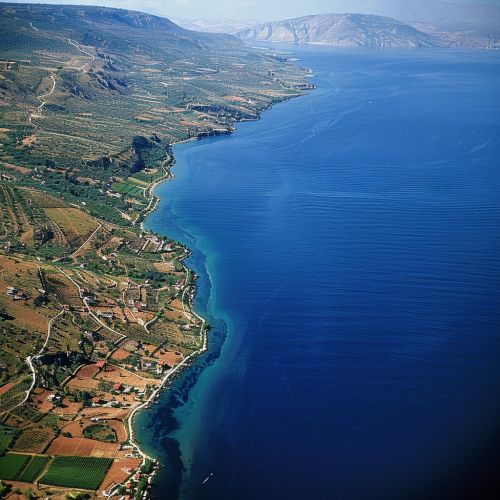Dardanelles
Geography
The Dardanelles, also known from Classical Antiquity as the Hellespont, is a narrow, natural strait and internationally significant waterway in northwestern Turkey that forms part of the continental boundary between Europe and Asia, and separates Asian Turkey from European Turkey. The strait is 61 kilometres (38 mi) long, and 1.2 to 6 kilometres (0.75 to 3.73 mi) wide, averaging 55 metres (180 ft) deep with a maximum depth of 103 metres (338 ft). Water flows in both directions along the strait, from the Sea of Marmara to the Aegean via a surface current, and in the opposite direction via an undercurrent.


History
The Dardanelles has been of immense strategic importance throughout history. The ancient city of Troy was located near the western entrance of the strait, and the strait's Asiatic shore was the focus of the Trojan War. Troy was able to control the marine traffic entering this vital waterway. The Persian army of Xerxes I of Persia and later the Macedonian army of Alexander the Great crossed the Dardanelles in opposite directions to invade each other's lands.
In more recent times, the Dardanelles became a major theatre of World War I. The Gallipoli campaign took place on the Gallipoli peninsula, with Allied forces trying to establish a naval route to the Russian Empire. The campaign is often considered to be the beginning of Australian and New Zealand national consciousness.
Modern Times
Today, the Dardanelles is a busy shipping route. It is controlled by the Turkish government, and all civilian and military shipping is coordinated and regulated by the Turkish Straits Vessel Traffic Service. The strait is used for various marine exports and imports, particularly for Russia and Ukraine's grain and oil shipments.
Environmental Concerns
The Dardanelles is also of significant scientific interest, as it has become a major area of study for marine biology due to its unique marine ecosystem. The strait is home to a diverse range of marine life, much of which is not found anywhere else in the world. However, the increase in shipping traffic and pollution has raised concerns about the impact on the strait's marine life.
